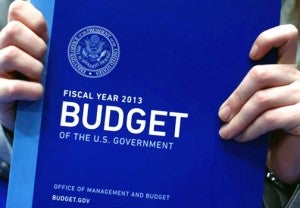In his State of the Union Address last month, President Obama made energy issues a focal point. Taking a clear stance, he said that it was time to “end the taxpayer giveaways to an industry that’s rarely been more profitable, and double-down on a clean energy industry that’s never been more promising.” With this statement, President Obama is addressing the reality that government support for new energy sources is the lowest it has been in any point in U.S. history, according to a report by DBL investors. “During the early years of what would become the U.S. oil and gas industries, federal subsidies for producers averaged half a percent of the federal budget. By contrast, the current support for renewables is barely a fifth that size, just one tenth of one percent of federal spending.”
Going further in addressing climate change the President said, “I know that there are those who disagree with the overwhelming scientific evidence on climate change. But here’s the thing. Even if you doubt the evidence, providing incentives for energy efficiency and clean energy are the right thing to do for our future, because the nation that leads the clean-energy economy will be the nation that leads the global economy, and America must be that nation.”
On Monday he unveiled his budget proposal for FY 2013. So, how does it hold up to the goals of his speech with regards to a clean energy future?
The Good News:
– The world’s largest energy consumer, the Department of Defense (DOD), would receive approximately $1 billion for energy conservation efforts. This would further the DOD’s increasing commitment to renewable energy which now makes up 8.5 percent of its energy production and procurement.
– With a 3.2 percent increase from the year before, the budget proposes $27.2 billion for the Department of Energy. Of that:
- Research and development for energy efficiency, advanced vehicles and biofuels would get $2.3 billion
- Renewable energy sources will get a $522 million increase and an additional $174 million for a revamped industrial technology-advanced manufacturing program.
- $12 million would be directed towards multi-year research investments in safer natural gas infrastructure in order to reduce risks associated with hydraulic fracturing in shale formations.
- Furthermore, pipeline safety would receive a 70 percent, $64 million, increase.
- This 3.2 percent increase comes just as a report vindicates the DOE loan program, confirming that the “overall loan portfolio as a whole is expected to perform well and holds less than the amount of risk envisioned by Congress when they designed and funded the program.” Energy Secretary Steven Chu states that, “we have always known that there were inherent risks in backing innovative technologies at full commercial scale, and it is very likely that there will be other companies in the portfolio that won’t succeed. But the vast majority of companies are expected to pay the loans back in full, on time and with about $8 billion in interest — while supporting a total of 60,000 American jobs and helping us compete for a rapidly growing global industry.”
The Bad News:
– Seeming to cave to current attacks, the fiscal 2013 budget proposes stifling cuts to the Environmental Protection Agency (EPA):
- Reducing current agency funding levels by $105 million, the EPA is slated to receive $8.3 billion. This would make for the first time since 1994 that the agency’s budget was cut for three consecutive years.
– Counterproductive cuts to USDA’s Natural Resources Conservation Service:
- Proposed cuts for Farm Bill conservation programs would be about $600 million.
- Already Congress has cut conservation funding by $2.8 billion over the last five years, representing 81 percent of the nearly $3.5 billion in Farm Bill spending cuts over that time period(FY 2008-2012).
Despite some disappointment, overall we at EDF are pleased that the President chose to not only speak to the importance of a clean energy future but that his budget reflects this as well.
Elgie Holstein, our senior director for strategic planning here at EDF and a former associate director of the Office of Management and Budget for Natural Resources, Energy and Science, sums it up well, “despite some flaws, the president’s budget is a big net plus for the environment, and we urge Congress to embrace the positive aspects of it.” That latter part will be the true challenge.
Vice president of EDF’s Energy Program, Jim Marston continues: “The fact is: clean energy and responsible environmental policy make good economic policy as well because they create jobs, while cutting energy and medical bills for American families. Look at it this way: environmental conservation is cheaper than environmental cleanup, just like preventive medicine is cheaper than emergency room treatment. We applaud the President’s support of job-creating, clean energy programs.”
The President understands that getting our energy future on the right path is an essential foundation that our country needs to be competitive, provide jobs and protect our health and environment.











2 Comments
If climate change crisis truly were real, we would see at least some of the millions of people involved in the global scientific community marching in the streets to save “their” children, not just the dozens of climate blame protesters we see now. Science does not act like unstoppable warming and catastrophic climate crisis from Human CO2 made fear mongering neocons out of all of us. Studying the effects, not causes of an assumed crisis is perfectly legal. It wasn’t a hoax; it was a feeding frenzy of exaggeration and a consultant’s wet dream come true. And just so you know, history will note that “no crisis” was good news for real planet lovers. Why would we want this misery to be real?
Thanks for the update on Clean Energy And The 2013 Budget Proposal – Arlen Felsher